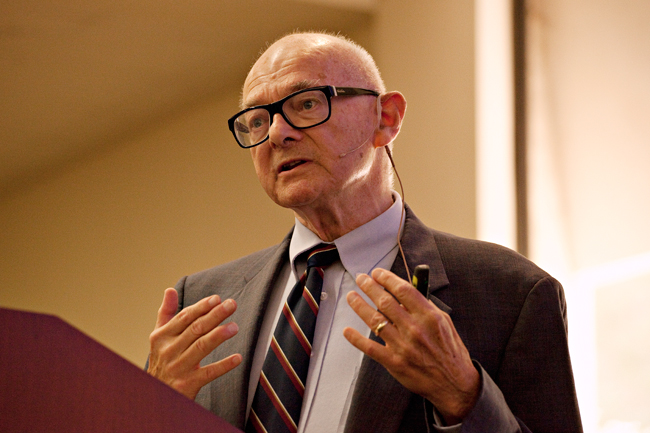Research fellow Steven Kornguth held a seminar Wednesday following his three-year-long study of the Texas women’s soccer team’s exposure to head trauma.
Kornguth, vice president for research in the Department of Kinesiology and Health Education, said although scientists can treat and diagnose short term effects of traumatic brain injuries, they do not have the technology to identify the long-term psychological consequences.
His research on traumatic brain injury, also known as TBI, focuses on young soldiers and athletes. According to Kongruth, injuries of this nature are a result of an impact to the head and can result in memory loss, loss of self or dementia.
“TBI is a process; you go from relatively good functioning to short-term deficits, and, for the most part, that will resolve itself,” Kongruth said. “What we don’t have a clue is if … years down the road, you will begin to see dementia.”
According to Kongruth, there are 3 million cases of TBI per year in the United States, and HealthDay reports that rates of reported concussions in high school athletes doubled from 2005 to 2012 as a result of increased awareness of the danger.
In the seminar, which came shortly after junior quarterback David Ash’s most recent concussion, Kornguth said the goal of his department’s research is to be able to predict long-term consequences of TBI through the analysis of an individual’s predispositions to the injury, and to determine whether a person’s genetic profile can influence how they will be affected decades later.
Kornguth said after the 3-year study, it is still unclear exactly what factors could predict whether a TBI could lead to dimentia in an individual.
“We can measure the force impacts that these people are experiencing, and come up with signatures,” said Kornguth. “What set of factors will enable us to predict long term injuries — that’s the challenge.”
Kornguth said there are devices to measure the impact on a football player’s head inside helmets, but the technology falls short for other sports because they do not use the same equipment.
Mechanical engineering senior Tanner Avery, who attended the seminar, said he is developing a next-generation sports mouthguard to help collect real-time diagnostic information that can be used in a variety of sports. The product, which, according to Avery, is a “check-engine light” for the brain, aims to measure the kind of impact inflicted on an athlete during play and send the quantitative data to be stored.
“The challenge is morphing together all these different areas — we have biomarkers, imaging resources, impact testing, baseline testing,” said Avery. “Over the next 50 years as a species, we’re going to have to figure this problem out.”
Athletic training junior Esteban Martinez-Cabello said he suffered a concussion while playing soccer in high school yet still feels safe playing sports today.
“I definitely make an effort not to take as many headers,” Martinez-Cabello said. “I think, in the early ages, there definitely is a good amount of [concussion] awareness. … Education is important.”





















